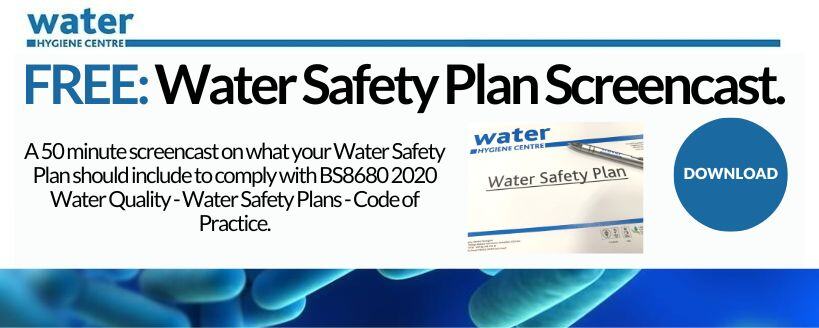Health Technical Memorandum [HTM] guidance published for England, Wales, and Scotland outlines the role of an Authorising Engineer (AE) to act as an independent advisor to the Trust / Board.
What does an Authorising Engineer (Water) do?
As the independent advisor, the AE shall remain independent of the Trust's / Board's operational structure. The appointment of the AE supports the Trust/Board with advice and support appropriate for the specialist service. The AE should:
- Appraise and assess Authorised Persons and determine their suitability for the role, and make recommendations for their appointment.
- Monitor the performance of the specialist service.
- Undertake an annual Water Safety Audit for the Designated Person. The objective is to provide assurance on the Trust / Boards’ performance with the effective management of the specialist service.
The term ‘specialist service’ covers each of the HTM disciplines. Our specialist service is ‘HTM04-01: water safety’
Benefits of having an Authorising Engineer (Water)
When appointing an AE(W), the Trust/Board needs to be assured of their competence, experience, and independence. When the Water Hygiene Centre is approached to support an organisation, firstly, we share a prepared ‘statement of qualification’ outlining for each our Senior Consultants who deliver Authorising Engineer (Water) duties, their training in particular AE training, their competency assessments completed internally and updated annually.

The statement also outlines their experiences with water safety and the client groups they serve. The Water Hygiene Centre specialises in consultancy support; we are free of vested interest in delivering ongoing monitoring, maintenance, or remedial work.
Resilience within a team is a must these days. Resilience is provided on several fronts with our AE(W) Hive Mind…
- Each of our Senior Consultants comes with years of experience - risk, building services, facilities management, biologist, project management, systems design and development.
- More than one!
Resilience in…
- Knowledge and experience within the team of Senior Consultants, through our monthly AE(W) Hive Mind, we share experiences with clients and learnings. This ensures that best practices can be implemented when identified, but more importantly, failures in particular types of equipment, processes, or even with contractors can be highlighted to those with whom we work, so they can avoid the same issues from happening. Our Senior Consultants can support each other with their own specialisms.
- Continuity of support for colleagues when they are on annual leave (yes, we insist colleagues do not work when they are on annual leave) or when they are pre-occupied with client commitments. Another Senior Consultant is identified within the team to help and support in these situations.
As a company with a team of Authorising Engineers, we are in a position to share this expertise across the entire UK.
Experiences of our Authorising Engineers (Water)...
At the monthly AE(W) Hive Mind meeting, we exchange issues and thoughts on how we’ve helped clients…
- Development of Water Safety Plans (WSP) – in May 2020, BS8680 Water quality. Water safety plans. The Code of Practice was issued. With this standard, we updated and reshaped our WSP suite of documents, which have evolved over the years, taking account of client feedback, technical updates, and industry advances.
- July 2024 saw an update issued in Scotland to the ‘National Infection Prevention and Control Manual: Chapter 4 – Infection Control in the Built Environment and Decontamination’. This updated guidance was shared with our English infection prevention and control team colleagues, who were aware of the update and advised that the English equivalent had no plan to be reviewed and updated. Working with IPCT teams in Scotland and England, we were able to update the WSP accordingly to reflect these changes.
 August 2024, NHS England published ‘NHS Estates Technical Bulletin (NETB) No.2024/3 Designing safe spaces for patients at high risk of infection from nontuberculous mycobacteria and other waterborne pathogens’. This new guidance was shared with clients in Scotland, although published by NHS England, ‘bugs’ don’t really worry about geographical boards or what might be considered ‘jurisdiction’. Our WSP was updated, superseding the previous WSP2.1 Water Safety Design. The new WSP2.1 Project Water Safety includes eight individual parts. Upon completion of the drafting, it was shared with clients, regardless of location, to better assist and support them with their new build development projects.
August 2024, NHS England published ‘NHS Estates Technical Bulletin (NETB) No.2024/3 Designing safe spaces for patients at high risk of infection from nontuberculous mycobacteria and other waterborne pathogens’. This new guidance was shared with clients in Scotland, although published by NHS England, ‘bugs’ don’t really worry about geographical boards or what might be considered ‘jurisdiction’. Our WSP was updated, superseding the previous WSP2.1 Water Safety Design. The new WSP2.1 Project Water Safety includes eight individual parts. Upon completion of the drafting, it was shared with clients, regardless of location, to better assist and support them with their new build development projects.
- July 2024 saw an update issued in Scotland to the ‘National Infection Prevention and Control Manual: Chapter 4 – Infection Control in the Built Environment and Decontamination’. This updated guidance was shared with our English infection prevention and control team colleagues, who were aware of the update and advised that the English equivalent had no plan to be reviewed and updated. Working with IPCT teams in Scotland and England, we were able to update the WSP accordingly to reflect these changes.
- Review of legionella risk assessment reports completed by a third-party FM company – the feedback on the reports identified many opportunities for improvement, including the very basics of not detailing BS8580 Part 1, and some of the core principles were missing. Through the AE(W) Hive Mind, this was shared with the other Senior Consultants. One of them identified that the same third-party FM company had just been commissioned by a client. The exchange of experience and performance proved to be insightful for the client.
Our AEW Hive Mind encompasses a diverse range of qualifications, disciplines, and extensive experience. Resilience in knowledge and support is paramount in those moments when they arise.
Feel free to reach out if you have any questions about this blog or if you would like to consult with one of our experts for further advice on water hygiene.
Editor’s Note: The information provided in this blog is correct as of the date of original publication – August 2021. (Updated August 2025)
© Water Hygiene Centre 2025









